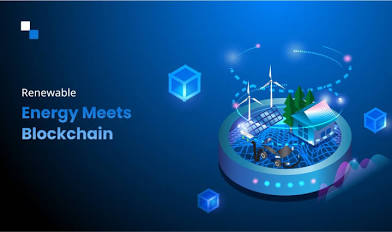IT IS YOUR MONEY
Renewable Energy Projects Go On-Chain
Renewable energy projects are now being tokenized, enabling transparent, fractional investment in solar farms, wind turbines, and green hydrogen facilities. Blockchain ensures traceability of energy production and automated distribution of returns. From Europe to Southeast Asia, governments and startups are leveraging digital assets to accelerate the clean energy transition. This innovation lowers capital barriers and aligns investor returns with environmental impact.

The Rise of Tokenized Green Energy
As the world shifts toward net-zero emissions, renewable energy infrastructure requires trillions in investment. Traditional financing relies on large institutional players, limiting public participation. Tokenization democratizes access by allowing investors to buy digital shares in solar or wind projects, regardless of location or capital size.
Each token represents ownership in a physical asset—such as a 1 MW solar array—and entitles the holder to a share of the electricity revenue. Smart contracts automate dividend payments, typically in stablecoins or fiat, based on real-time energy output data.
This model not only broadens the investor base but also increases funding velocity for developers, accelerating project deployment.
Real-World Implementations and Investor Impact
In Germany, the startup Energy Web partnered with local utilities to tokenize a 5 MW solar farm in 2023. Over 1,200 retail investors purchased tokens, each representing €100 of equity. Returns are distributed quarterly based on actual power sales, with performance data publicly viewable on a blockchain dashboard.
In Thailand, the Provincial Electricity Authority launched a pilot allowing citizens to invest in community solar projects via digital tokens. Participants receive credits on their electricity bills, creating a direct link between ownership and utility savings.
Meanwhile, in Texas, a blockchain-based platform tokenized a 50 MW wind farm, attracting both institutional capital and ESG-focused retail investors. The project achieved full funding in under 90 days—half the time of traditional models.
Transparency, ESG Reporting, and Carbon Tracking
One of the key advantages of on-chain renewable projects is verifiable impact. Energy generation, carbon offset calculations, and maintenance logs are recorded immutably, enabling real-time ESG reporting.
For example, the Energy Web Chain integrates with IoT meters and carbon registries, allowing token holders to track how many tons of CO₂ their share has prevented. This data can be used for corporate sustainability disclosures or personal impact portfolios.
Such transparency strengthens investor trust and enhances the credibility of green claims, combating "greenwashing" in the energy sector.
Challenges and Regulatory Path Forward
Despite momentum, challenges remain. Regulatory frameworks for tokenized energy assets vary widely. In the EU, MiCA and the proposed Electricity Market Design reform are beginning to accommodate digital energy securities.
Custody, grid integration, and long-term asset management also require robust governance. However, as central banks explore green digital bonds and governments prioritize climate resilience, the regulatory environment is evolving favorably.
Tokenized renewable energy is more than a financial innovation—it’s a tool for inclusive climate action. By turning clean infrastructure into accessible digital assets, it empowers individuals to invest directly in a sustainable future.
To explore how tokenized renewable energy can deliver both environmental impact and financial returns, visit DigitalAssets.Foundation and speak with experts for a FREE consultation.

More News
© 2025
